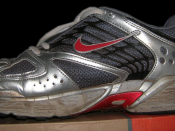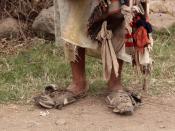Nike has built up their brand name through marketing; the result is one of the world's best known corporate trademarks. However since it was founded 19631 the company has become a symbol both of the benefits and risk that lie in globalization. The success of Nike is unchallenged, however since the beginning of the 1980s Nike has confronted several conflicts where it was criticized for its international labour practices. The strategy of outsourcing all manufacturing to cheap labour regions and focus the resources on aggressive marketing which had given Nike their comparative advantage now seemed to be the source of their problems. Nike's powerful trademark might have made them the ultimate target for activists wanting their message to be spread over the world.
Jeff Ballinger, American labour activist, had worked in Indonesia for many years but had not got much attention when he published articles about the conditions in the factories.
In the early 1990s this was changing as a rare wave of strikes swept across Indonesia and together with Ballinger's articles started a wave of criticism where Nike got in the centre.
This paper will discuss the accusations against Nike during the 1990s. The aim is to evaluate them and actions taken by Nike to understand what results the actions had and if there could have been other ways to handle the situation. In the paper we use facts from the case 2:1 in Translational Management when no other sources are given.
Problem defenitionFrom start the Nikes business strategy has been based on the idea of no in-house production. This made it possible to use the suppliers that made the best offer and to focus on their marketing. For a long time this was a very successful way of acting and in the beginning of the 1990s they started...


